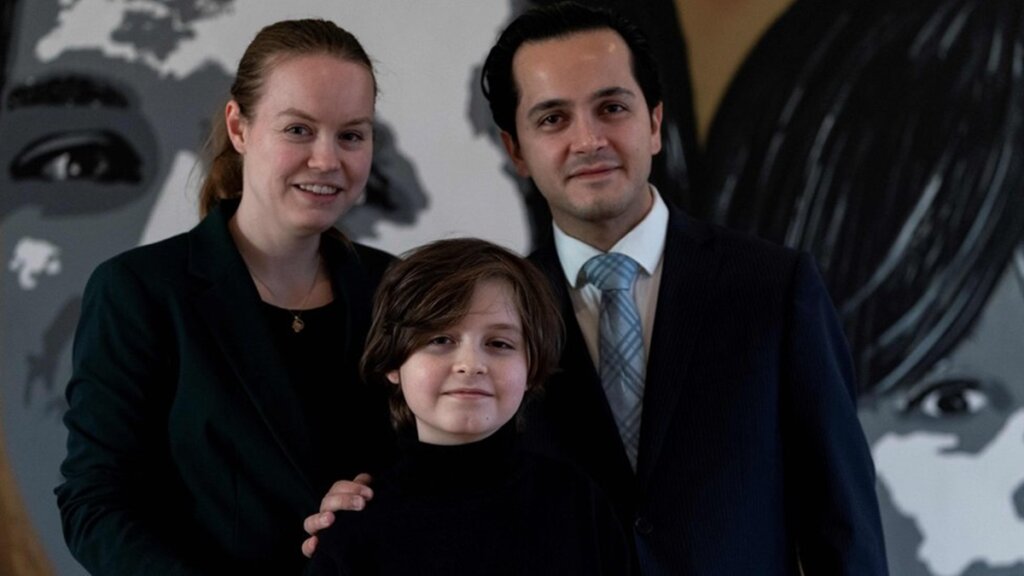Laurent Simons: The Child Prodigy Who Wants to Discover Immortality


Written and verified by the psychologist Valeria Sabater
Laurent Simons is 11 years old and has just obtained his degree in physics from the University of Antwerp (Belgium). He did it in one year, whereas most people take three. However, although this feat may seem extraordinary, in the 90s, Michael Kearney completed his studies in anthropology at the University of South Alabama (United States) at the age of ten.
Child prodigies are always fascinating. Indeed, Laurent completed his secondary school studies at the age of nine. He’ll begin his doctorate when he’s 11. His ultimate aim is to delve into the mysteries of immortality. In fact, in the future, he wants to be able to replace organs with mechanical and technological devices.
Some call him young Sheldon. As a matter of fact, it’s not only a high IQ and passion for science he shares with him. He also adores superheroes from comics and watching movies with his friends. In fact, for this bright preteen, the world has no limits. Furthermore, if there’s one thing that he craves, it’s to acquire more knowledge in order to do good.
Laurent Simons has a photographic memory and an IQ of 145 points.

A special boy
Laurent Simons spent his early years in Belgium with his grandparents when his parents were working in Holland. It wasn’t long before his potential was realized. Indeed, it wasn’t long before he started to exhibit that innate curiosity that defines child prodigies, along with exceptional abilities for his age. As a matter of fact, when he was only four years old, he began his primary studies.
He has an IQ of 145. The World Health Organization ( WHO) considers that an IQ of over 130 is exceptional. However, we need to consider more than simply psychometric tests. In fact, the way the child learns has to be taken into account as well. It seems that, generally, these exceptional little ones possess the ability to apply different and innovative techniques when it comes to consolidating knowledge.
Laurent Simons has always been defined by these kinds of qualities. Furthermore, it’s these that have got him to where he is today, with a college degree and a desire to delve into the field of quantum physics.
An exceptional mind with great goals and normal hobbies
This young prodigy often claims that school was rather boring. However, despite this fact, his teachers managed to keep him from feeling strange or different. This is certainly key for child prodigies. Indeed, while it’s necessary to adjust the curriculum to their educational needs, their social and emotional integration should always take priority.
Laurent Simons has friends of his own age with whom he doesn’t talk about science. He also loves superhero movies and series like Loki, riding horses, and driving go-karts. He’s a normal child with extraordinary potential to conquer his dreams. Dreams that couldn’t be any higher or nobler.
Laurent aspires to be able to create artificial organs and extend life through new technologies. In fact, he wants to be able to help his grandparents who have heart problems. Furthermore, he wants to lay the foundations for that longed-for scientific dream: to discover the mysteries of immortality.
Laurent Simons first studied electrical engineering at Eindhoven University of Technology in the Netherlands. He was due to graduate when he was only nine years old. However, the school didn’t want to adapt the subjects for him because, according to them, going so fast wasn’t good for his development. This meant his parents were forced to move him to the University of Antwerp, where he was able to graduate in physics.

Child prodigies, when genetics and education come together
Professor Larry Vandervert is one of the most prominent figures in the study of high abilities. He conducted a study in 2009, in which he analyzed certain child prodigies throughout history and the evolution of their understanding.
Psychological literature tends to claim that the definition of a child prodigy is a child under ten years of age who exhibits characteristics similar to those of Laurent Simons. Vandervert points out that the one thing that differentiates them from other children is their working memory and mental agility.
According to his research, the cerebellum could be key to the speed with which these kinds of children process information. He also claims that the environment is extremely important for children with high intellectual abilities to succeed in their studies. Indeed, if it’s supportive and stimulating as well as providing them with security and affection, they’ll be able to reach their full potential. It appears that the synergy between emotional education and intellectual stimulation is paramount.
Laurent Simons faces many personal and life challenges ahead. However, what emerges from all his interviews is his charisma and his maturity. Furthermore, he’s a child who, despite possessing such clear dreams and goals, continues to enjoy the closeness of his parents and friends of his own age. There can be little doubt that the future has great things in store for him.
All cited sources were thoroughly reviewed by our team to ensure their quality, reliability, currency, and validity. The bibliography of this article was considered reliable and of academic or scientific accuracy.
- Butterworth, Brian (January 2001). “What makes a prodigy?”. Nature Neuroscience. 4(1): 11–12. doi:10.1038/8284
- Feldman, David. (2015). Why Child Prodigies Are Important. Revista de Educacion. 211-224. 10.4438/1988-592X-RE-2015-368-295.
- Feldman, David Henry (Fall 1993). “Child prodigies: A distinctive form of giftedness”.Gifted Child Quarterly. 27 (4): 188–193. doi:10.1177/001698629303700408
- Vandervert, Larry. (2009). The appearance of the child prodigy 10,000 years ago: An evolutionary and developmental explanation. Journal of Mind and Behavior. 30. 15-32.
This text is provided for informational purposes only and does not replace consultation with a professional. If in doubt, consult your specialist.








